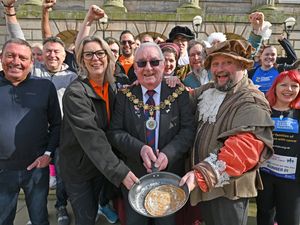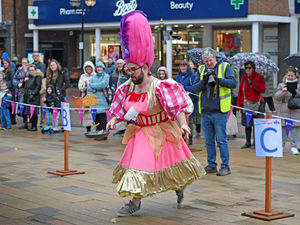Peek inside the Black Country's secret garden
Magical and mysterious - a walled garden is a historic hidden treasure.
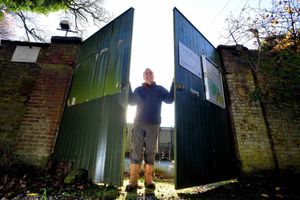
Hundreds of years of ago the 'secret' gardens were a feature of large country houses, growing enough fruit and vegetables to feed the entire household.
And although this 18th century gem has been derelict for several years, campaigners are bringing it back to life as they restore it to its former glory for everyone to see.
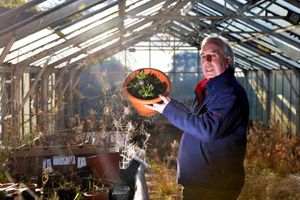
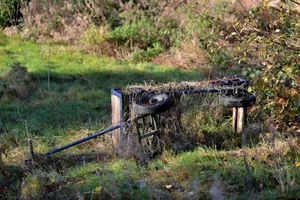
They have had their first peek into the overgrown garden on the Leasowes Park estate in Halesowen - and describe it as 'magical'.
Sadly their first glimpse also revealed other visitors had been in the garden - in the form of vandals.
On entering the Grade 1 listed garden members of the Halesowen Abbey Trust, which purchased the garden, found vandals had scaled the walls, smashed windows, ripped up electric cables and even lit fires in the two-acre plot of land.
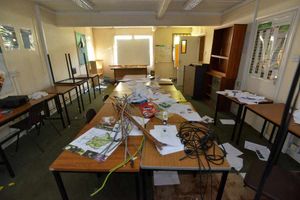
[figure caption="Some of the devastation caused by the vandals" title="Some of the devastation caused by the vandals" align="right" alt="Some of the devastation caused by the vandals" id="791227" size="100"
Yet despite the damage, the garden has retained much of its character and community leaders will not let the setback alter their restoration plans.
The garden had previously been used by Stourbridge College as a horticultural education centre but none of its students had been inside for the last two years.
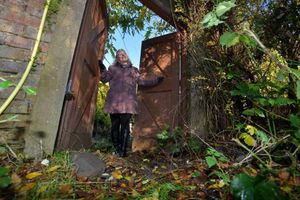
[figure caption="Carole Freer and Phil Baldwin in Halesowen Leasowes Park, where the Halesowen Abbey Trust have taken ownership" title="Carole Freer and Phil Baldwin in Halesowen Leasowes Park, where the Halesowen Abbey Trust have taken ownership" align="right" alt="Carole Freer and Phil Baldwin in Halesowen Leasowes Park, where the Halesowen Abbey Trust have taken ownership" id="791237" size="100"
Mick Freer, who headed the purchase on behalf of the Trust, said: "The vandals had ripped up cables, torn out copper piping and put graffiti all over the walls.
"They had even damaged the sandstone capping on the walls when they had climbed over to gain entry.
"It was also tremendously overgrown but at least we can deal with mother nature. There has been two years of growth since the college came out so it is quite spectacular what can happen in that time."
The walled garden was historically used to grow vegetables and flowers for the estate, which would have had about 20 family members and servants.
It contained greenhouses, a boiler and 'a bothy' where the head gardener would sleep to protect his produce from thieves and wildlife.
[figure caption="Carole Freer" title="Carole Freer" align="right" alt="Carole Freer" id="791223" size="100"

It was taken over by the local authority in 1934, before Stourbridge College was given the keys to the garden in 1974.
Despite the vandalism, the Trust members say the garden has retained much of its character and they are considering naming the restoration work the 'secret garden' project.
Mick's wife Carole described seeing the gardens for the first time as a 'magical' moment.
"The gardens had quite a spiritual feel to them. There is such a tranquillity about it especially in these days where everyone is so busy all the time and everything is so fast paced," she said.
"This is part of Halesowen's heritage so it is very important to me. There are a lot of people who don't event know the garden exists but I am sure local people will get behind the project and want to come and visit.
"It is quite a daunting task and it will be very challenging to get it back to how it used to be. I have no doubt it will be well worth it."
Walled gardens were a feature of 18th and 19th century estates and there are other examples locally at Shugborough Estate, Sandwell Park Farm and at Sugnall Hall near Stafford.
Part of the wall's role was to prevent it from encroaching on the views from the house but they also had a much more practical purpose.
Helen Edwards, a warden at the Leasowes park estate, said: "Some of the walls have cavities in them which would have been used to heat the environment for the vegetables. They would light a fire in the cavities allowing them to grow more exotic fruit such as peaches.
"The walls were really to maintain a decent habitat to keep things like rabbits out which could damage the garden. It would have been a very nice and warm and sheltered spot for growing a whole range of vegetables.
"From our point of view as wardens we definitely welcome the move to re-open the garden to the public. It is a valuable part of of our history and would be a fantastic addition to a visitor's experience."
The aim of the trust is to restore the garden, to have the buildings in period, to begin growing fruit and vegetables and to have the whole thing open to the public. There may be allotments made available to local residents.
It follows work earlier this year to restore three other historic areas in Leasowes Park, which was created by poet William Shenston.
Volunteers will begin work on clearing the garden tomorrow, with the trust hoping to open the garden early next year so people can see the on-going progress.
They will now be seeking grants from public funds and sponsors to help pay for the restoration.
Mr Freer added: "It will be the first time in more than 200 years the garden will be open to the public. The potential of the site is enormous."


